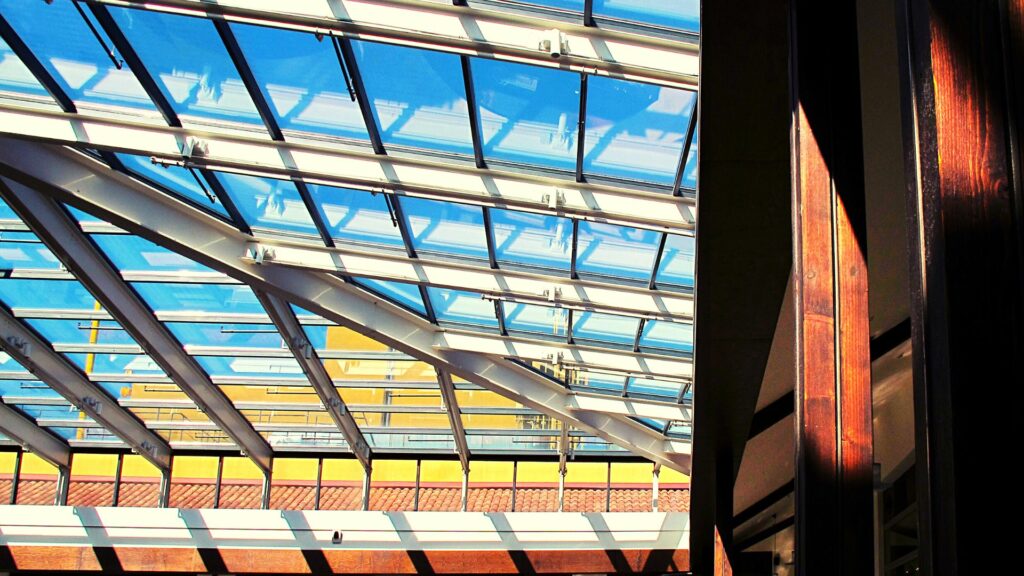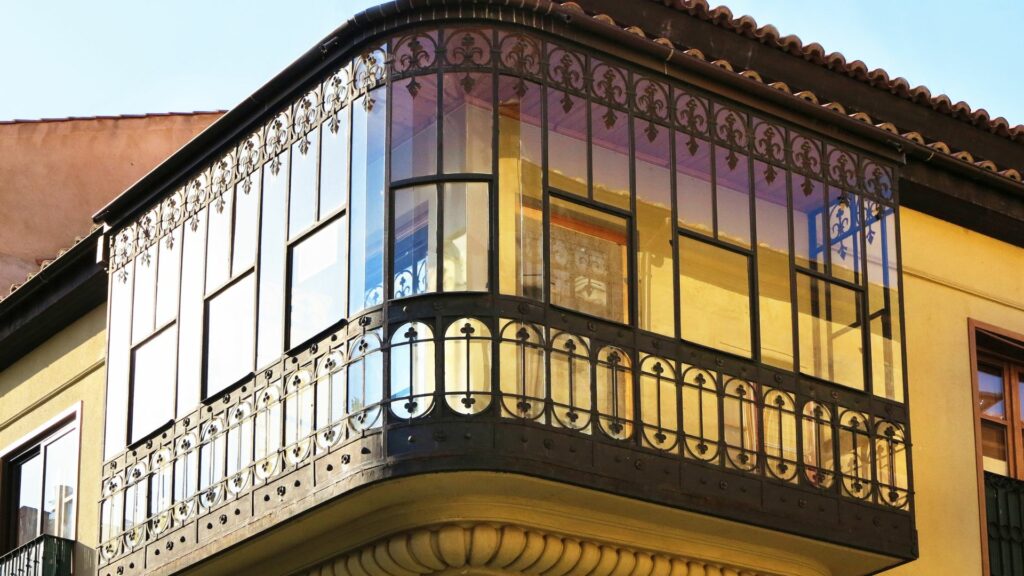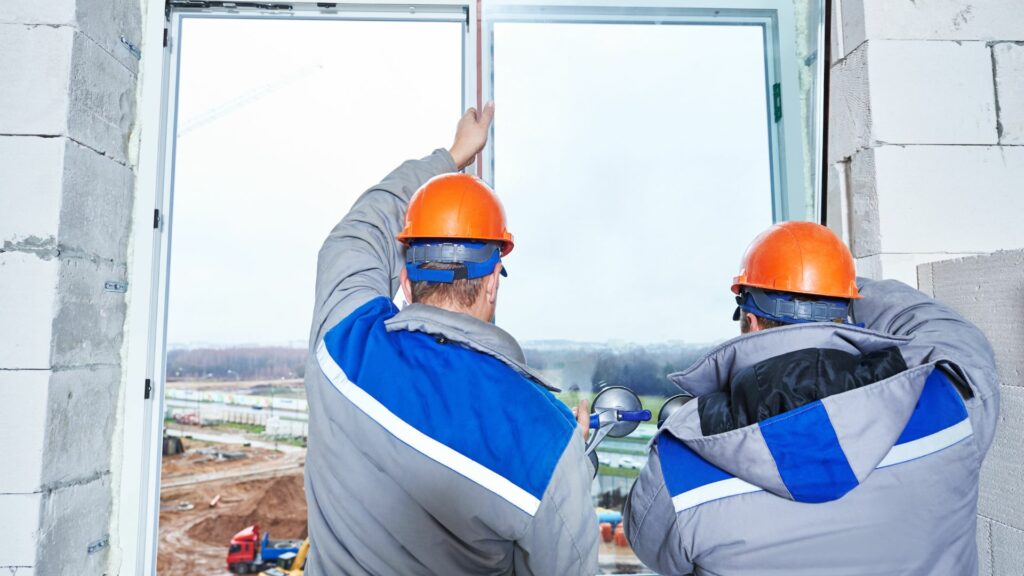As used in construction, glazing refers to installing glass in a building’s fixed openings, such as windows and doors. Glazing also refers to any glass within a building or structure. In construction, the glazing for a project refers to the glass needed to complete the project.
The glazing for a project may include standard glass, sun windows, storefront glass, and skylights. It is common for glazing to be clear glass, but we also use other forms such as frosted, textured, and etched glass for aesthetics. This article will discuss the applications of glazing in construction.
Table of Contents
What is glazing?
Glazing describes installing glass in fixed openings within a building and refers to all the glass required to support a building under construction. Glazing has both aesthetic and functional value in construction.
There are different glazing methods to choose from when completing a construction project. The glazing method is delicate because you must select the most suitable method for that particular project or building. What works great on one building may be a complete disaster on another building.
When choosing a glazing method, it is essential first to consider the needs of the client or owner. Some clients will want a wall full of glass windows which calls for a lot of glazing material and expertise, while others may choose more unadorned windows.
After establishing the client’s needs, you must create a realistic budget. Figure out exactly how much work you will do, and factor in any extra work before submitting your quotation. Construction projects are notorious for going over budget, and glazing is no exception.
Types of glazing methods
Ultimately, the choice of glazing method should be based on what works best for that project and not what is easiest or cheapest to do. The five types of glazing methods are the dry glazed, wet glazed, pointed support glass systems, cable net, and double skin wall methods.
Dry glazed
Metal panels or glass units are compressed into the glazing pockets on the frames using structural tapes or rubber gaskets to generate sufficient compression force. These compression stresses are placed on either side of the glazed element. Depending on the structure, glazing can be done from the internal or external side.

Wet glazed
The wet glazed method involves applying an adhering agent to the aluminum frame before fitting the window panel. The adhering agent, such as structural silicone, secures the panel to the frame. The wet glazed method is suitable for indoor projects to avoid dust that would otherwise make the adhering agent less effective.
The wet glazed method requires extra attention, especially during the application of the adhering agent. Wet glazing is ideal for factories and shops as it makes it possible to control dust. This glazing method works well for one or two-story structures.
Pointed Support Glass Systems
People first used the glazing method of pointed support glass systems in the 1960s. While this method has evolved with the emergence of technology, it still employs the concept of tempered glass with holes through which the glazing can be bolted to the structure.
The pointed support glass systems method is popular in buildings with a view because the bolted fittings are relatively tiny and do not obstruct the view. There are various pointed support glass system configurations to meet different architectural needs.
Pointed support systems are aesthetically pleasing, but this method requires a lot of caution and expertise to achieve precision. It is a rather complicated process but is well worth it as pointed support glass systems have a significantly longer life cycle due to tempered glass. Manufacturers process tempered glass by exposing it to high temperatures.
Cable Net
The cable net method delivers substantial views like the pointed support systems method. The cable net method is elegant because it eliminates the need for framing. However, it's a costly method due to cable net structural analysis and coordination.
However, cable net walls are a great choice because they provide aesthetic views without interfering with the functionality of the building. If you are going for a luxurious look and have the time, the cable net method might be your best bet!
Double Skin Wall
As the name suggests, this method involves the construction of a façade made out of two layers of glass with space between them. It is the most expensive and complex of the five glazing methods. However, one can manipulate the space between the double skin walls to bring in lots of sunlight, ventilation, and energy.
Types of Glazing
Below are the types of glazing glass in construction.
Float Glass
Float glass is a smooth sheet of glass with a consistent thickness achieved by floating molten glass on a pool of molten tin. Float glass is large and thin.

Annealed glass
Float glass can be cooled slowly in a controlled environment to reduce internal stresses within the sheets and make the glass stronger. Annealed glass is less likely to break because of its manufacture. However, annealed glass can be risky as it breaks into large jagged shards.
Laminated glass
Laminated glass is made by fusing two or more layers of glass with polyvinyl butyral (PVB) under heat and pressure. Laminated glass can be manufactured using heat-strengthened glass or tempered glass.
Fully tempered glass
Fully tempered glass is made by heating the annealed glass and cooling it much faster than heat strengthened glass. The rapid cooling leaves the internal parts of the glass fluid for longer than the surface.
This forms equal amounts of tensile and compressive stresses across the glass, making it approximately three times more potent than annealed glass.
When broken, fully tempered glass shatters into many fine pieces, making it safer.
Heat Strengthened Glass
When annealed glass is reheated to about 1200°F and then cooled down slowly, heat-strengthened glass is formed. This type of glazing is twice as durable as annealed glass but typically needs to be laminated because it is hazardous when broken.
Self-Cleaning Glass
This type of glazing is made by applying a transparent coating to glass. This coating reacts with UV rays to break down dirt so that it is easily washed off when it rains.
Low Emissivity Glass
Low emissivity glass is made by coating glass with silver or tin to reflect long-wave infra-red radiation. Low emissivity glass regulates temperature within a building because it does not absorb much radiation.
Wired Glass
Wired glass is fire-resistant glazing made by placing wire mesh between layers of glass, similar to how PVB is used to make laminated glass. This type of glazing is less likely to shatter under high temperatures due to the mesh.
Summary
Glazing is an essential part of construction and may cost a project owner a lot of money if not done correctly. Understanding the costs, inefficiencies, efficiencies, and safety risks associated with different glazing and glazing methods is critical to saving time and money in a construction project.

